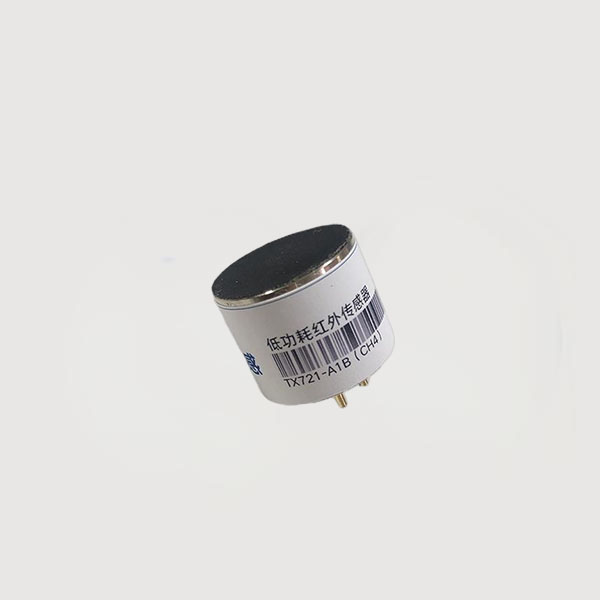

 News
News Industry News
Industry NewsIn the field of industrial safety and environmental monitoring, methane gas detection is a key link in preventing major accidents such as explosions and fires. As the two mainstream technical solutions, infrared methane sensors and laser methane sensors are widely used in energy, environmental protection and civil safety fields due to their non-contact detection characteristics. Although they have the same functions, they have significant differences in technical principles, performance characteristics and applicable scenarios, providing diversified choices for different industry needs.
Technical principles: from spectral absorption to precise detection
The core principle of infrared methane sensors is based on the Lambert-Beer law. This technology uses the selective absorption effect of methane molecules on infrared light of specific wavelengths: when the light beam emitted by the infrared light source penetrates the gas environment containing methane, the methane molecules absorb infrared energy in a specific band, resulting in a decrease in the intensity of the transmitted light. By accurately measuring the degree of light intensity attenuation and combining the law formula, the methane concentration can be inferred. This technology relies on a wide-spectrum infrared light source and filters the effective wavelength through a filter, which is suitable for general concentration detection.

TX721-A1B Low Power Infrared Gas Sensor
The laser methane sensor uses tunable semiconductor laser absorption spectroscopy (TDLAS) technology, and its working principle is more targeted and accurate. The laser emits a single-mode laser with a wavelength that matches the absorption peak of the methane molecule. When the laser passes through the gas area to be measured, the absorption of methane at a specific wavelength causes the light intensity to attenuate. By analyzing the attenuation signal with a high-precision detector, the quantitative detection of methane concentration can be achieved. Compared with infrared technology, TDLAS can avoid interference from other gases in the environment and achieve more accurate trace analysis.

TX911-A Laser Methane Gas Sensor
Performance comparison: stability, sensitivity and cost trade-off
| Feature | infrared methane sensors | laser methane sensor |
| Detection accuracy | Medium, suitable for routine concentration detection | Extremely high, can detect trace leaks as low as ppm or even ppb level |
| Dynamic range | Narrow, suitable for medium and high concentration detection | Wide range, covering low concentration to explosion limit concentration (LEL) |
| Selectivity | Susceptible to cross-interference from gases such as water vapor and CO2, requiring complex filtering processing | High specificity, only responds to methane, and has outstanding anti-interference ability |
| Stability | The technology is mature, long-term stable operation, suitable for continuous online monitoring | Good stability, but more sensitive to environmental factors such as temperature and vibration, and requires optimized design |
| Cost and maintenance | Low hardware cost, but may increase maintenance costs due to cross-interference | High initial investment, but high reliability reduces long-term maintenance costs |
Application scenarios: from industrial monitoring to home safety
Infrared methane sensors have become the first choice in the industrial and municipal fields due to their high cost-effectiveness and stability. Typical applications include:
- Daily inspection and leakage warning of urban gas pipelines
- Conventional gas monitoring in chemical plants, sewage treatment plants and other places
- Macro monitoring of air pollution sources by environmental protection departments
Laser methane sensors dominate high-risk and scientific research scenarios with their high precision and strong anti-interference capabilities:
- Real-time monitoring of oil and gas mining platforms and LNG storage and transportation facilities
- Laboratory gas analysis, precise measurement in environmental science research
- Safety warning of flammable and explosive high-risk environments such as underground coal mines
In the field of household gas safety, laser methane sensors are gradually replacing traditional technologies. Taking Tensensor's TX911-A household sensor as an example, it is based on TDLAS technology. It not only has the characteristics of no oxygen dependence, anti-water vapor interference, and anti-poisoning, but also achieves rapid response and accurate detection through independently developed temperature control and temperature compensation algorithms. This technological innovation has greatly improved the safety and reliability of household gas alarms, marking the entry of civil security into an era of intelligence and refinement.
Conclusion
Infrared and laser methane sensors have their own strengths, and users need to make comprehensive selections based on factors such as detection accuracy requirements, budget costs, and environmental complexity. With the iteration of technology and cost optimization, the popularity of laser sensors in the civil field is significant, and may redefine the standards and application boundaries of the gas detection industry.